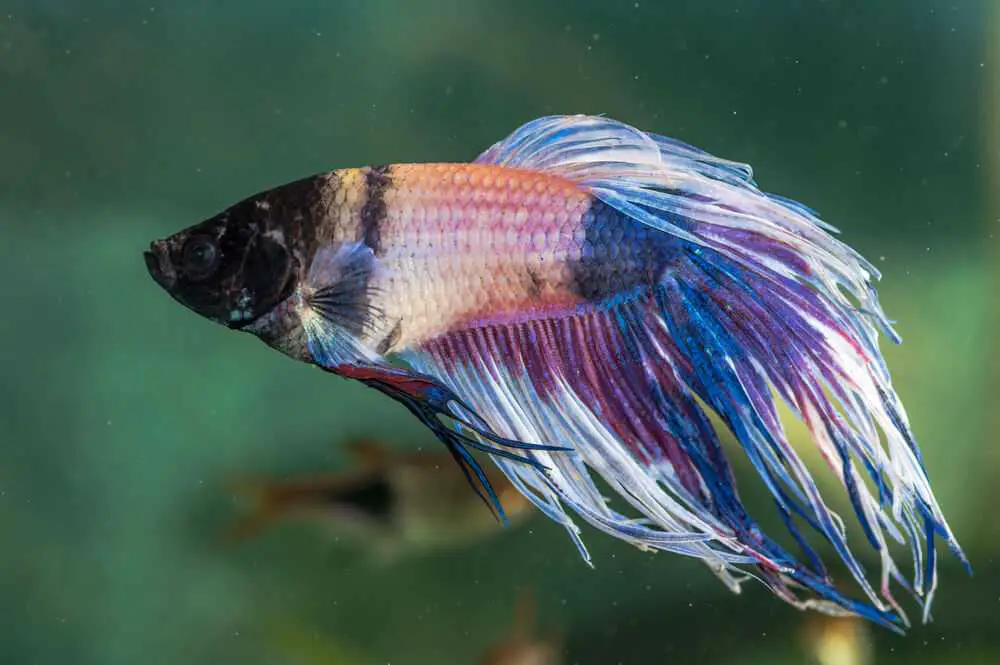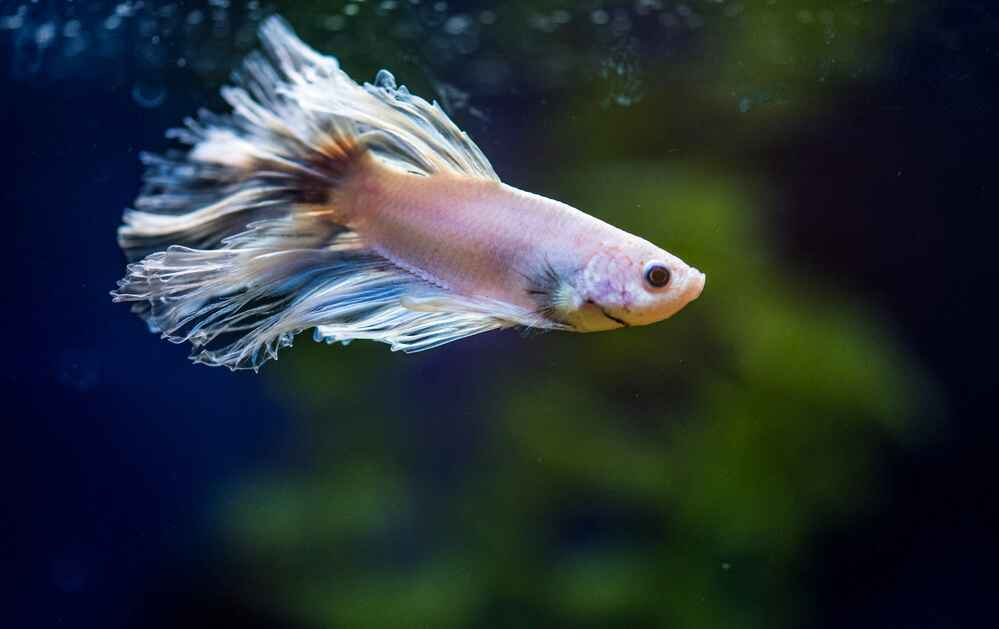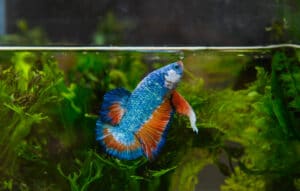If your fish has fin rot, you need to keep an eye on its condition and treatment progress to make sure it gets better. But how do you know if fin rot is improving?
In this post, we will explain some common signs to look for to help you determine if your fish’s fin rot is improving.
By understanding the signs of recovery, you can have peace of mind knowing that your fish is on the road to recovery.
Don’t let fin rot get in the way of your fish’s health – read on to learn more about how to tell if fin rot is healing and what steps you can take to support your fish’s recovery.
Here’s How To Tell If Fish Fin Rot Is Healing:

As the affected area subsides and the affected area begins to heal, it is not uncommon for the damaged fins of your fish to start regenerating.
During this process, you will observe the development of new, clear, or white skin tissue around the tail fin. This is a positive indication of healthy regrowth and should not be cause for concern.
On the other hand, the presence of red tissue around the infected area may suggest that the infection is still present and ongoing treatment is necessary.
As your fish recovers from fin rot, you may begin to notice the emergence of a clear, translucent membrane at the edges of its regenerating fins. This is a promising sign that the damaged tissue is being replaced by new, healthy growth.
Taking regular pictures of the fins and comparing their size and appearance over time can be helpful for tracking the progress of fin recovery.
In addition to monitoring your fish’s physical recovery, it is also important to maintain optimal water conditions in its tank.
This includes regularly testing the levels of ammonia, nitrite, and nitrates, as well as monitoring the fish’s behavior to ensure it is not biting its own tail or exhibiting any other concerning behaviors.
By taking these steps, you can help your fish recover and return to optimal health.
Related Read: Fin Rot Or Fin Nipping: How To Identify (Explained)
Top 5 Signs That Tell Fish Fin Rot Is Healing:
- Improved appetite: Fish recovering from fin rot may start to eat more as their appetite returns.
- Increased activity: Fish previously lethargic or inactive may become more active as they start to feel better.
- Regrowth of fins: As the infection clears up, you may notice new growth on the damaged fins. This is a good sign that the fish is recovering.
- Change in fin appearance: As your fish recovers from fin rot, you may notice some key changes in the appearance of its fins. One of the most noticeable indicators that the infection is subsiding is the absence of blackened tissue around the edges of the fins. In addition, if the damaged areas are starting to regenerate, you may also observe the emergence of a clear or whitish membrane at the edges of the fins.
- Improved overall appearance: Fish previously sickly or thin may start to look more healthy and robust as they recover.
Remember that it may take some time for the fins to regenerate fully, so it is important to continue providing proper care and treatment until the recovery process is complete.
Related Read: Top 11 Reasons Betta’s Fins Look Shredded (+Treatment!)
What Steps To Take To Ensure The Fish Recovers Quickly From Fin Rot:
You can take several steps to support your fish’s recovery from fin rot and improve its overall health.
- Improve the water quality: Fin rot can be caused or exacerbated by poor water quality, so it is important to maintain a clean and healthy environment for your fish. This may include performing regular water changes, testing the water for ammonia, nitrite, and nitrate levels, and using a high-quality filter to remove impurities from the water.
- Reduce stress: Stress can weaken a fish’s immune system and make it more vulnerable to illness, so it is important to do what you can to reduce stress in the tank. This may include providing plenty of hiding places, avoiding overcrowding, and avoiding sudden changes in temperature or lighting.
- Provide a varied and nutritious diet: A healthy, balanced diet can help to support your fish’s immune system and overall health. Consider offering a variety of foods, including flakes, pellets, and live or frozen foods, to ensure that your fish gets all the nutrients it needs.
How To Cure Fish Fin Rot? Top 4 Tips To Know
To effectively treat and cure fish fin rot, there are several steps you can take:
#1. Perform Water Changes And Monitor The Filter:
Regular water changes can help to remove harmful bacteria and toxins from the water, which can help to reduce the risk of infection and support your fish’s recovery.
It is also important to check the filter to ensure it is functioning properly and not contributing to poor water quality.
#2. Test And Adjust The pH:
The pH of the water can have a significant impact on your fish’s health. If the pH is not within the recommended range, it is important to take steps to correct it.
The optimal pH range for most freshwater fish is between 6.8 and 7.8. If the pH of the water in your fish’s tank is outside of this range, it can affect the fish’s health and immune system, making it more vulnerable to illness.
Therefore, it is important to maintain the pH within the recommended range to support your fish’s overall health and recovery from fin rot.
If the pH of the water in your tank is too high or too low, you can take several steps to adjust it. These may include using pH-adjusting chemicals, adjusting the water hardness, or adding buffers to the water.
It is essential to follow the recommended dosage and application instructions for any chemicals you use and to monitor the pH regularly to ensure that it stays within the optimal range.
#3. Adjust The Water Temperature:
Changing the water temperature to 75.2°F – 78.8°F may help improve your fish’s overall health and support its recovery from fin rot. Low water temperature can contribute to the development of fin rot in fish.
Fish immunity can have a negative impact due to low water temperatures, which can also lead to diseases. However, increasing the water temperature can help it heal from fin rot.
#4. Use Relevant Treatment
Many treatment options are available for fin rot, including malachite green methylene blue, phenoxyethanol, and aquarium salt.
It is important to choose a product appropriate for freshwater fish and follow the recommended dosage and application instructions.
If the fin rot appears evenly spread out and has holes in it, it could be an indication of a fungal infection. In this case, antifungal medication may be necessary to clear up the infection.
However, if the fin rot appears to have rough, sharp points protruding – a spiky appearance, it will be more helpful to use antibiotics to treat the infection.
How Long Does It Take To Recover From Fin Rot?
A fish’s recovery time from fin rot can depend on the severity of the infection, the fish’s health, and the treatment’s effectiveness.
In general, mild cases of fin rot may clear up within a week or two with proper treatment, while more severe cases may take longer to resolve.
Can Fish Fin Rot Heal On Its Own?
Fish fin rot may resolve on its own if the reasons for stress are eliminated, and the fish has a strong immune system to fight off infection. Still, it is usually best to use treatment rather than relying on self-healing alone.
Fin rot can cause significant damage to the affected fins if left unchecked, and it is important to take steps to address the underlying cause of the infection to prevent it from spreading or worsening.
You can implement simple measures such as performing water changes, cleaning the tank, reducing stress, or increasing the aquarium water temperature. These actions can improve your fish’s chance of fighting off the infection.
Also Read: Can Fish Survive Ich Without Treatment?
Wrapping Up
In short, fin rot is a common infection that can affect the fins of fish and can be a serious and potentially life-threatening condition if left untreated.
With proper treatment, however, it is often possible for fish to recover from fin rot. By paying close attention to your fish’s physical appearance, behavior, and appetite, you can get a good sense of its overall health and progress.
Some key signs that your fish is recovering from fin rot include improved appetite, increased activity, regrowth of fins, change in fin appearance, and improved overall look of the fish.
Monitoring these indicators and continuing the treatment can help your fish recover and return to optimal health.
Hi! I’m Praveen Ghoshal, the founder of eFishkeeping.com. Inspired by my Dad, I got interested in fishkeeping when I was a kid. Since then, I have been involved with this hobby. Currently, I have 3 fish tanks at our home, and I enjoy this hobby with my full family. Read more about me here.







